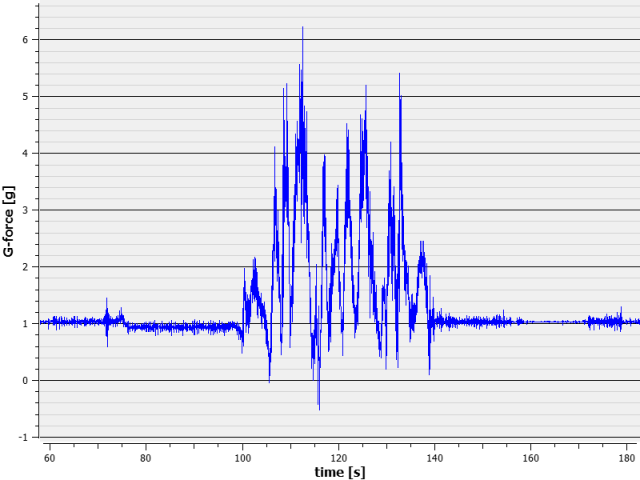Yeah, it just depends how you measure it. UC or Loefet would be able to go into much more detail, but I'll try and explain briefly.
G-spikes and sustained Gs are very,
very different. If my memory serves me correctly, Loefet's G-force readings from Nemesis indicated that the helix pulled around 3G sustained, but had spikes up to 4.5-5G. It wouldn't surprise me if they were using the more general data for Nemesis, but using more 'spike' based stats for Nemesis Inferno. The issue is, as has been said, how long they're held for. Sustaining 3G, even for just a second or two, will feel a lot more intense than having a 4.5G spike for say, one fifth of a second. As this video says (I don't know how accurate it is, but it proves the point), you body acts as a cushion, so you don't really feel forces that don't last for long enough:
http://watch.discoverychannel.ca/#clip652680 (listen from 5:01 when the guy explains the cushioning)
Kebab said:
But then again, I don't believe it myself that it pulls just 3 G's, back-left is one of the most intense experiences I've ever endured.
Like I said above, sustaining 3Gs is a lot. It really does feel like it should be a lot higher G-force than it really is. I don't really know how else to elaborate this (UC?).
bezzzzzer said:
I read that astronauts experience 3G. It's because it's held for such a long time that the astronauts needs training, etc. So 3G isn't really a weak force.
Fighter pilots can experience 5-6G sustained corners (and the aircraft can handle far more), it's just that they, along with astronauts, are trained for it and wear G-suits in extreme cases. We're not used to experiencing prolonged forces, so it feels more intense to us.
marc said:
They probably took the reading when it was new on a certain seat etc.
I really don't think the age would make that much difference. If anything it's going to increase the roughness (and thus the G-spikes), but it wouldn't make
that much difference to the ride to increase the forces a lot.
marc said:
I bet if they done it now in the rain at the end of a day it would be higher.
Well... yeah. I mean that's the obvious (and confusing) thing. If the park measured the G-force on a wet day in the evening then they could claim that the ride "can pull 3.5G sustained", but does it actually do that most of the time? No.
Basically it's all down to how the park has got the data. Have they done their own tests? If they did was it average running conditions? Mid-season? Mid-day? Did they do it off season? After the park shut after a long day of operation? What was the weather like? Maybe they got the numbers from the manufacturer, but it's unlikely they'd be able to test for G-spikes very accurately in their software, so maybe they supply the sustained (and easy to calculate) forces. Have they counted the highest spike, or have they had some criteria to define a sustained force (sustained for 1 second etc)? There are loads and loads of factors that slightly affect the G-forces that it really isn't just as simple as quoting a number.




